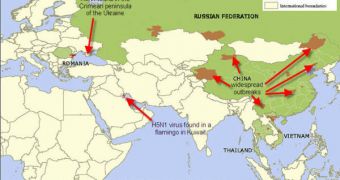Talking about perfect timing. Researchers at the North Carolina State University (NC State) and the Korea Advanced Institute of Science and Technology (KAIST) have just recently finished developing a new numerical model, designed to predict people's mobility and interaction patterns. The invention could be of tremendous help in counteracting the spread of epidemics, and could also aid authorities better prepare for such emergencies in the future, so maybe the outbreaks won't catch them by surprise. In addition to these immediate uses, the model could also have applications in such trivial matters as land-use planning, which makes it extremely versatile.
Basically, the main function of the model is to predict how people would move over the course of a day, a week, a month, or even longer. Predicting human mobility patterns is very important in an outbreak, because, in the modern world, individuals from all around the world interact in the confined spaces inside airports, and then simply fly to their home lands. In this fashion, diseases can nowadays travel around the globe within 24 hours, as opposed to the months, or even years they took to get from Europe to Asia in the 15th or 16th centuries.
The research involved in generating this model was painstakingly slow to conduct. Some 100 volunteers in the United States and South Korea were asked to wear GPS devices while performing their daily routines. The experts then traced their activities from satellites and were eventually able to identify complex mobility patterns. During an epidemic, people who have never met each other pass viruses from one another and then go about their daily businesses without even knowing they have gotten infected. This means that pathogens infect the population exponentially, with one human infecting at least five to ten others.
Places such as a bank, a dry-cleaner and a pharmacy have been identified as being among the whereabouts that people visit the most, and, therefore, as potential “hot spots” for propagating infections. The experts say that this type of commonly visited places, which regularly accommodate and serve a lot of people, needs to be avoided during outbreaks. The same holds true for stadiums, hospitals and schools, which, by their very nature, are designed to host large numbers of persons.
“A realistic human mobility model could be used by civil engineers to plan roads, by public health officials to study virus outbreak spread, or by telecommunication companies for planning where to locate cell-phone towers. Any situation where you would want to be able to predict where people will go,” NC State Professor of Computer Science Dr. Injong Rhee, who has been the paper's co-author, shares about the study. The research, SLAW: A Mobility Model for Human Walks, was presented on April 20th at the 28th IEEE Conference on Computer Communications, in Rio de Janeiro, Brazil.

 14 DAY TRIAL //
14 DAY TRIAL //